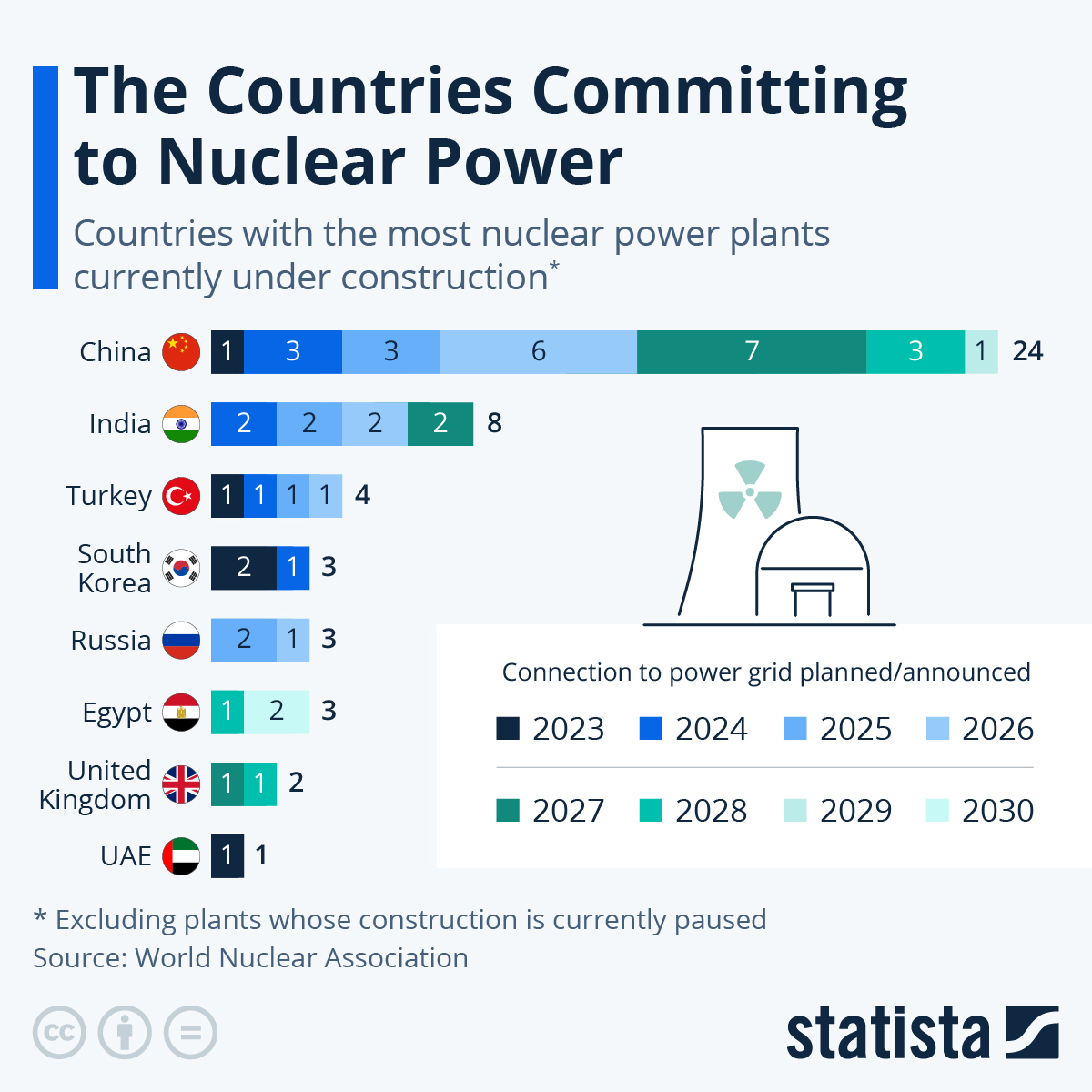In the mid-term, nuclear power plants are considered by some experts to be the most efficient transitional solution for achieving global climate goals. Criticism is though levelled at the largely unresolved question of final storage and potential safety risks. As this infographic using data from the World Nuclear Association shows, no country is currently committing more to a nuclear future than China.
The Asian superpower currently has 24 new nuclear reactors planned or being built, with one new power plant to be connected to the grid this year. The United Arab Emirates and Turkey are also planning to connect one new power plant each, and in South Korea there are two more in the pipeline for this year.
In second place is India, which plans to have eight new nuclear power plants built and connected to the grid by 2027, followed by the aforementioned Turkey with four and South Korea with three reactors.
What is noteworthy here is that with China, India and Russia, three of the five BRICS members are among the top eight. From January 1, 2024, Saudi Arabia, Iran, Ethiopia, Egypt, Argentina and the United Arab Emirates will join as new members. In three of these six future member countries - the United Arab Emirates, Egypt and Argentina -new nuclear reactors are also currently under construction.





















